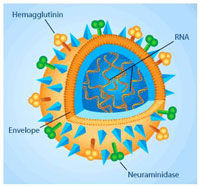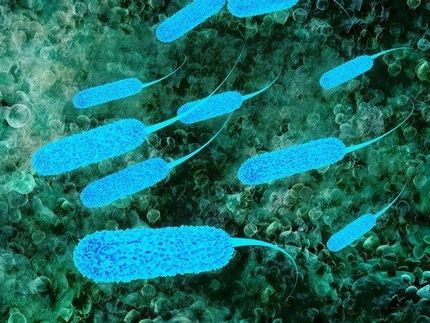Discovery of enzyme structure points way to creating less toxic anti-HIV drugs
By discovering the atomic structure of a key human enzyme, researchers at The University of Texas at Austin have pointed the way toward designing anti-HIV drugs with far less toxic side effects.
Their work was published in Cell.
"Many anti-HIV drugs are designed to stop the process of DNA replication," says Dr. Whitney Yin, assistant professor of chemistry and biochemistry. "That turns out to be a great thing to do to help cure virus infections, because it stop the processes of viral replication.
"At the same time, however, when you target such a critical process in viruses, you may also target human enzymes that perform similar functions in normal cells, and this is what causes harmful drug side effects."
Yin and her graduate student, Young-sam Lee, have solved the atomic structure of an enzyme, known as pol gamma, that is responsible for DNA replication in human mitochondria.
When mitochondria are working normally, they produce most of the energy that sustains human cells. When pol gamma comes into contact with certain anti-retroviral drugs, however, it can incorporate the drug into mitochondrial DNA, and thus interfere with the normal replication process. This interferes with the ability of mitochondria to function. The consequences can range from simple nausea to bone marrow depletion to organ failure.
"Patients who are taking this class of anti-HIV drugs have suffered these drug toxicities for a long time," says Yin. "Dosages and combinations of drugs can be chosen so they don't kill you, but they still can't be used at their most effective concentrations against HIV. However, in large part because combination therapies have become more successful and patients are living longer, toxicity has become more of an issue than before."
Although it's been known for some time that pol gamma is responsible for mediating the toxicity of the drugs, Yin says, it has been difficult to design a drug that can distinguish between HIV and pol gamma without knowing the structure of pol gamma. With the structures of both pol gamma and HIV known, the differences between the two can be exploited in the design of new drugs that will be more selective (and thus less toxic) against HIV.
"This is a unique opportunity for drug design," says Yin. "Now you have two pictures side by side. You have the viral target protein and the human protein. You know not to do anything in this region where the two proteins are similar, but rather focus in areas where they're different."
In addition to its relevance to anti-HIV drug design, Yin's research is also helping to explain how mutations in pol gamma lead to various degenerative diseases, including epilepsy, encephalopathy and Alpers' syndrome (a fatal childhood disease leading to brain and liver failure).
Most read news
Topics
Organizations
Other news from the department science

Get the life science industry in your inbox
By submitting this form you agree that LUMITOS AG will send you the newsletter(s) selected above by email. Your data will not be passed on to third parties. Your data will be stored and processed in accordance with our data protection regulations. LUMITOS may contact you by email for the purpose of advertising or market and opinion surveys. You can revoke your consent at any time without giving reasons to LUMITOS AG, Ernst-Augustin-Str. 2, 12489 Berlin, Germany or by e-mail at revoke@lumitos.com with effect for the future. In addition, each email contains a link to unsubscribe from the corresponding newsletter.
Most read news
More news from our other portals
Last viewed contents
CCR5
Helical_cone_beam_computed_tomography
Detecting when and why deadly blood clots form
Catch_the_Sperm
Together:_working_for_well-being
Neutering
Food_intolerance
Synovial_cell_sarcoma























































